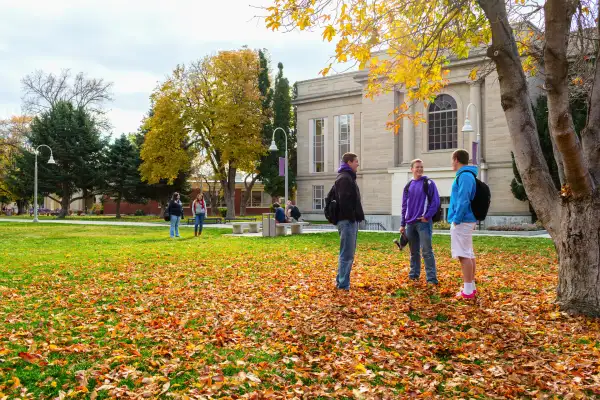Colleges Are Giving Students Pandemic Relief Checks Worth up to $3,000

Stimulus checks from the IRS have come and gone, but many college students are still eligible for coronavirus relief payments from their schools.
Back in March, President Biden’s American Rescue Plan set aside nearly $40 billion for the third tranche of the Higher Education Emergency Relief Fund (HEERF), which was first set up by Congress in March 2020 to provide relief to students and higher education institutions during the coronavirus crisis.
Roughly half of that money was earmarked for direct aid to students. While colleges aren’t required to finish distributing money from the third batch of funding until the end of the spring semester in 2022, many are already writing checks to their students to help them cover ongoing expenses related to the coronavirus pandemic like rent, healthcare, travel expenses and childcare.
Thousands of U.S. colleges received a piece of that $40 billion pot. Aside from a few rules from the federal government, the schools are allowed to distribute the money however they see fit. William Paterson University, for example, planned for grants of between $300 and $1,800 per student, though it noted that some students could receive more if fewer students than expected applied for the money. The average grant at Howard University was $834, with 11,949 students receiving checks. At St. Francis College, third round HEERF grants could be as much as $3,000. And at Bushnell University, the average grant as of the end of September was $3,120, while the maximum grant was $6,500.
Many schools, like Duke and Florida State universities, are allocating the money based on financial need using FAFSA information. Last month, Florida State University distributed $17.7 million to more than 16,000 students.
Duke will begin sending out its third round of grants next month, and FSU says it will also distribute another round of aid money during the Spring 2022 semester. Eligible students at the City University of New York will also see payments in the next few weeks, as will students at the University of Rhode Island.
Others, like Molloy College and Worcester Polytechnic Institute, required applications from students seeking a grant.
Some schools, like Penn State, are doing both. Penn State sent out the majority of its $50 million in grant money to some 31,000 students in increments between $1,000 and $1,800, based on financial need as determined by the FAFSA. The school finished sending out that round of grants this week, but it also reserved $5 million for $1,000 grants that students who did not qualify for the first round of grants can apply for.
Department of Education Under Secretary James Kvaal told lawmakers earlier this week that HEERF funding had helped keep students — including those who were housing or food insecure — afloat and enrolled in school during the crisis. He said the program enabled 93% of colleges to provide emergency scholarships to students who were at risk of dropping out.
A recent survey of 400 college presidents from the American Council of Education, a nonprofit that lobbies on behalf of colleges, found that 63% of the presidents strongly agreed that HEERF funding had enabled their institutions to keep students enrolled who were at risk of dropping out due to factors related to the coronavirus pandemic.
The grants have “really been a lifeline for our students,” Roberta Johnson, director of financial aid at Iowa State University, previously told Money. As of last week, colleges had spent 65% of their total student HEERF funding, according to Kvaal.
More from Money:
College Students Got Billions in Emergency Pandemic Aid. What Happens When the Funding Dries Up?
How the CARES Act Neglects Some of America's Most Vulnerable College Students

